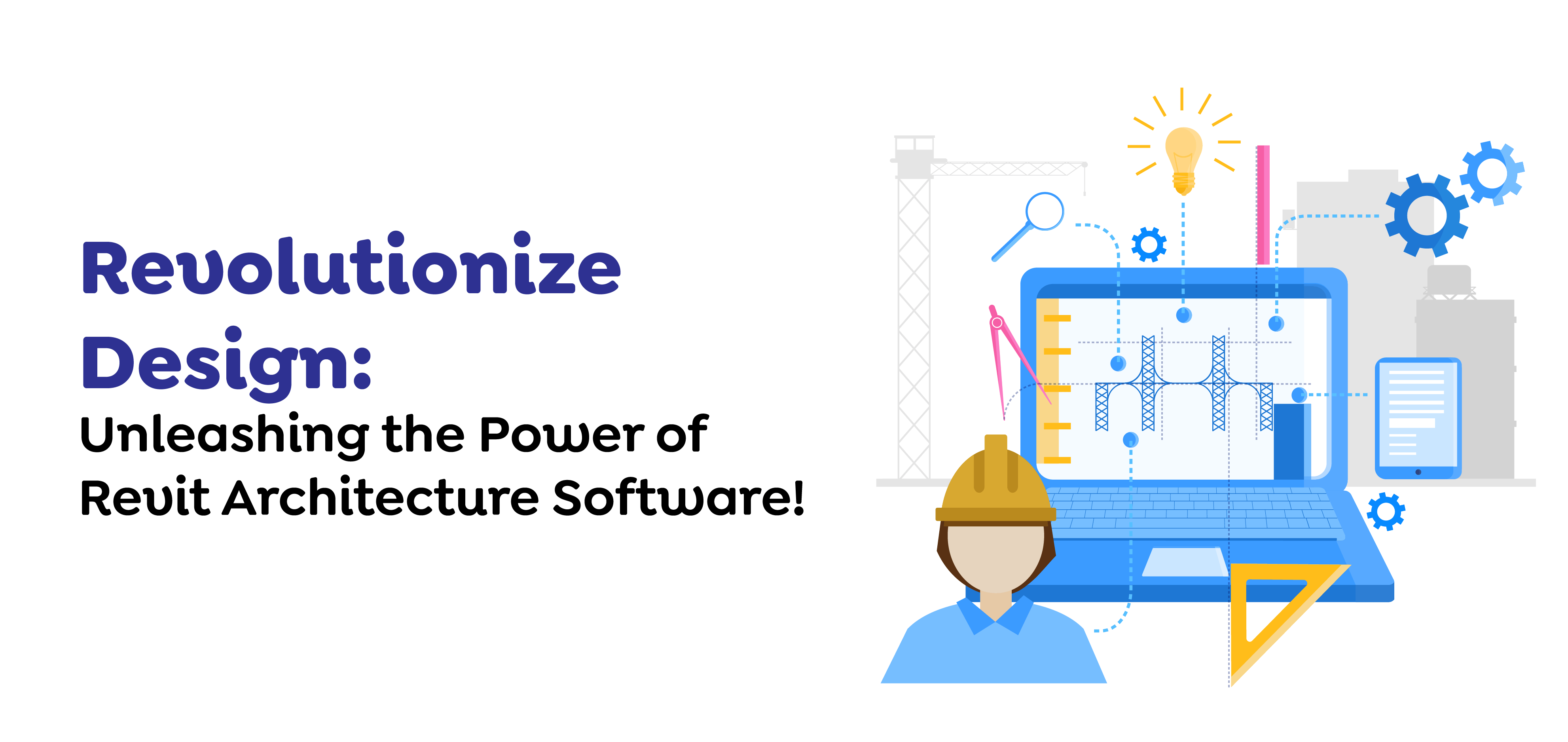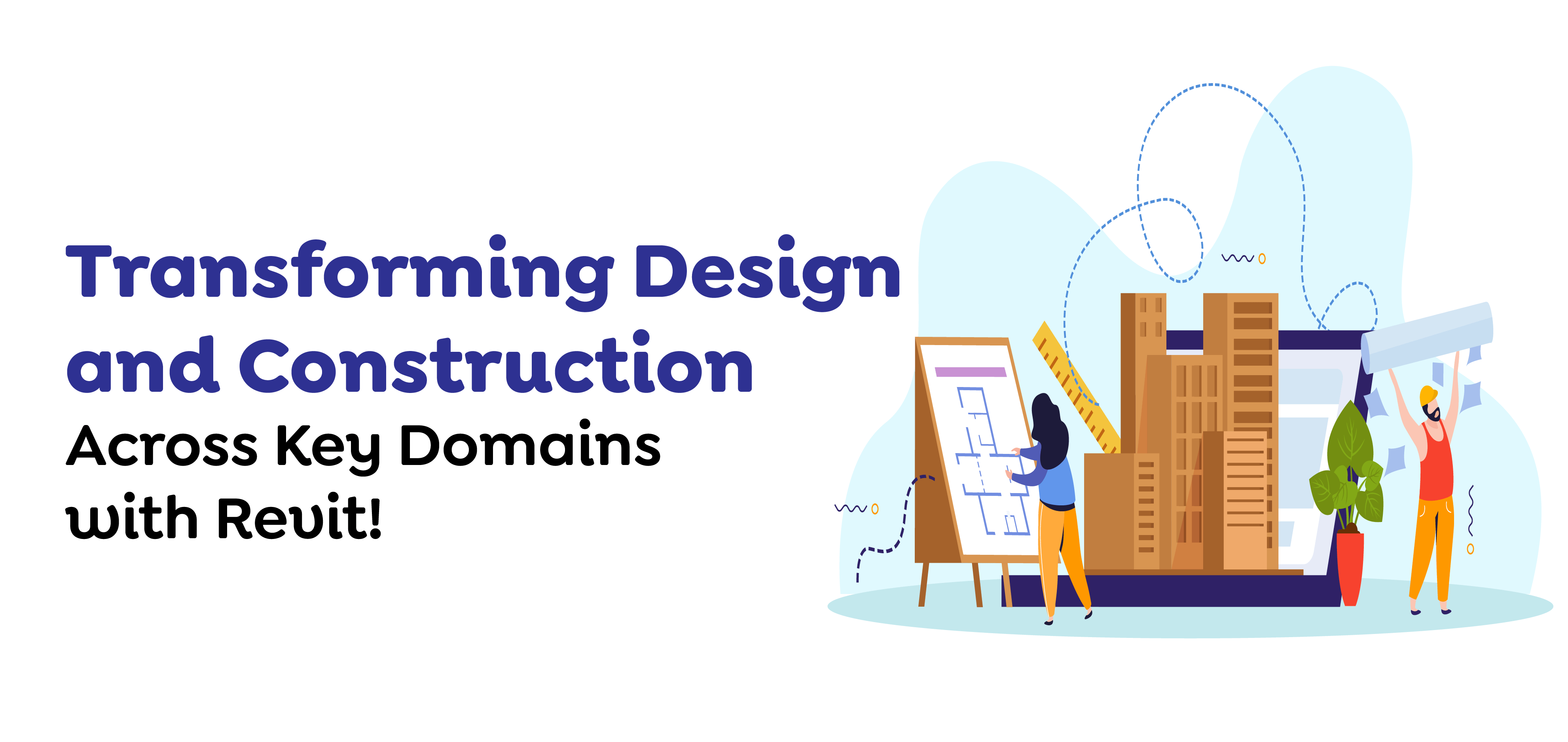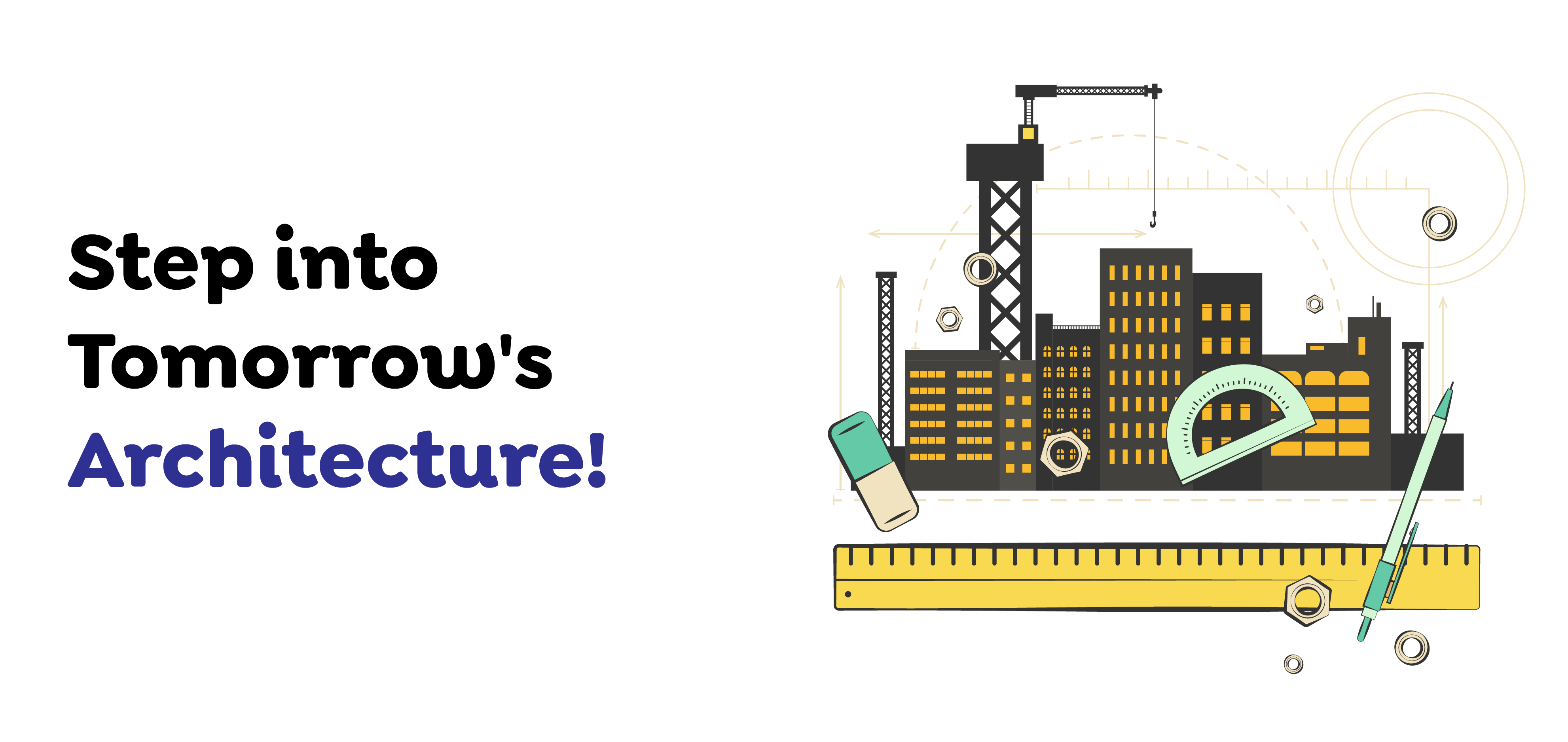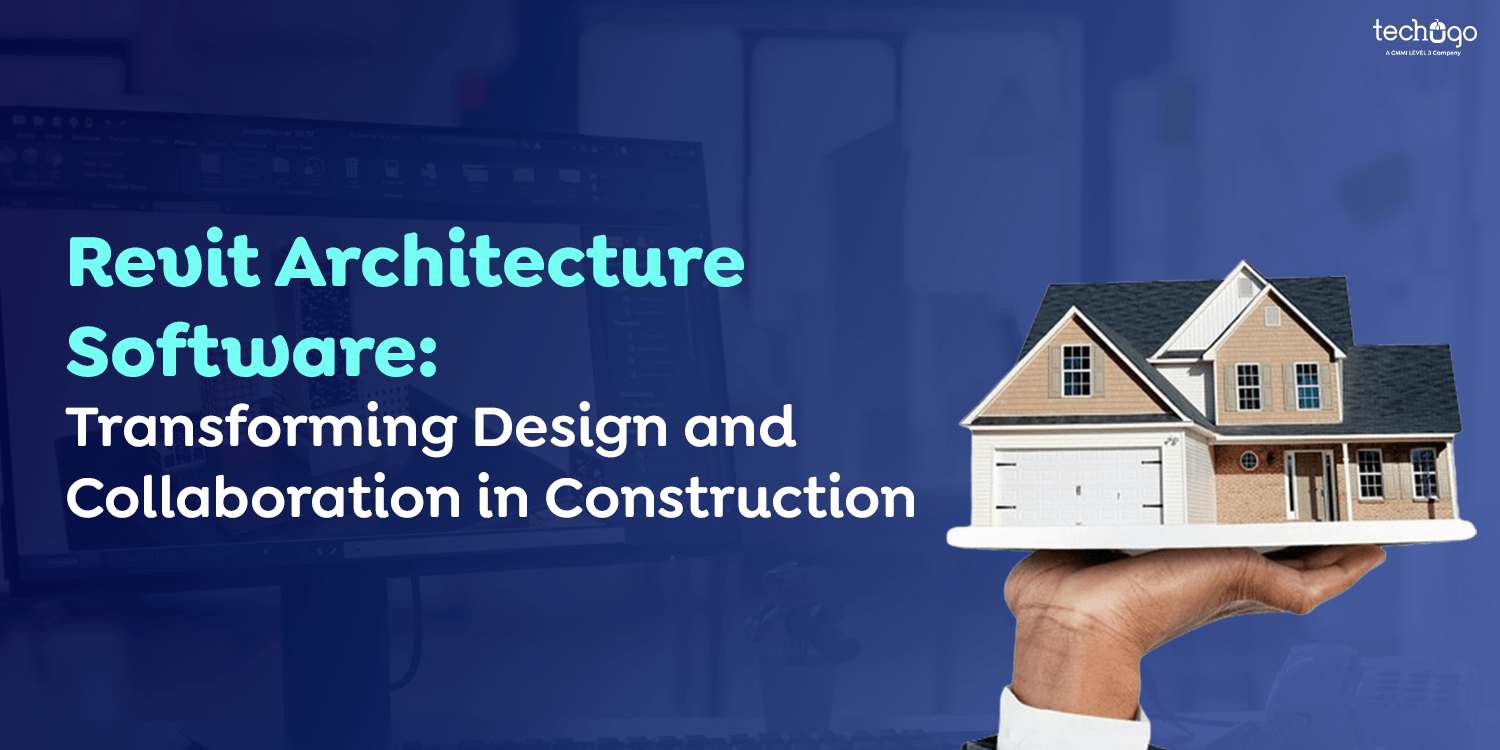Revit architecture software acts as a fundamental component in various industries, covering construction, engineering, architectural planning, design, and construction. Within the complex domain of intricate and detailed projects, Revit stands out as a potent instrument, armed with sophisticated features, plugins, and tools that streamline procedures and enrich collaborative efforts. This industry-standard software revolutionizes work processes for architects and designers, providing efficient workflows and accurate outcomes.

Understanding the Essence of Revit Software
Revit stands as a sturdy software developed by a mobile app development company, that empowers architects and designers by providing sophisticated tools and essential features to enhance work procedures, streamline modeling, and encourage collaboration within teams. The software is renowned for its efficiency in handling custom building designs, rapid editing, and optimized rendering. As a pivotal player in the industry, Revit has become indispensable for professionals seeking a reliable platform for detailed and accurate projects.
Key Features and Applications of Revit Software
Revit Customization and Support:
- Revit application endorses personalization, permitting experts to adapt the platform to their particular requirements. This characteristic facilitates the creation of plugins and supplementary capabilities to augment the comprehensive user encounter.
Revit Plugin Development:
- The flexibility of Revit extends to plugin development, where users can create customized tools and features to address specific project requirements. This capability enhances the software’s functionality and adaptability.
Revit Mobile App Development:
- Embracing modern trends, Revit extends its reach with mobile app development, enabling professionals to access and work on projects seamlessly, even on the go. This mobile integration enhances flexibility and real-time collaboration.
Custom Revit Add-ins for MEP:
- Revit supports the development of custom add-ins specifically tailored for Mechanical, Electrical, and Plumbing (MEP) applications. This ensures that the software aligns with the unique needs of various disciplines within the construction and engineering domains.

Transforming Design and Construction Across Key Domains
Revit Architecture software plays a pivotal role in several key areas, revolutionizing the way professionals in various industries approach design and construction. Here are the key areas where Revit Architecture software is of paramount importance:
- Parametric Modeling: Enables the creation of 3D models based on defined rules, allowing for flexible and dynamic design changes.
- Advanced Tools: Offers a suite of advanced tools for custom building designs, fast editing, and optimized rendering.
Collaboration and Coordination:
- Interdisciplinary Coordination: Facilitates detailed coordination among teams from different disciplines, reducing complexities in collaborative work processes.
- Linked Modeling: Allows changes made to the base model to be communicated and updated across all teams, ensuring synchronization.
- Quality Construction Documents: Enhances the quality of construction documents in 3D space, providing accurate and customizable parametric objects for documentation.
- Efficient Workflows: Streamlines workflow inefficiencies, especially in the scheduling mode, centralizing information and updating models with changes.
Collaborative Work Environment:
- Cloud-Based Access: Enables remote work capabilities through cloud-based access points, fostering collaboration and allowing teams to work seamlessly from different locations.
- Team Collaboration: Enhances collaboration by allowing teams to interact and share expertise during the design process.
Energy Efficiency and Analytics:
- Optimized Structural Designs: Reveals the level of consideration for energy efficiency in structural designs, impacting operational and maintenance costs over time.
- Energy Analytics: Provides insights into energy efficiency, enabling conscious decision-making in line with environmental considerations.
Customization and Support:
- Revit Customization: Allows for customization to meet specific project requirements, supporting enhanced functionality through Revit plugin development.
- Technical Support: Provides essential technical support services for quick issue resolution, ensuring a smooth design process.
- Total Project Cost: Impacts the total project cost by reducing the time needed to craft implementable designs, thus positively affecting project budgets.
- Accuracy in Designs: Ensures high accuracy levels in designs, crucial for projects with intricate details and a need for precision.
BIM (Building Information Modeling):
- Core BIM Functionality: Revit is a leading software for BIM, emphasizing the need for accuracy and speed in managing building designs and 3D modeling.
Revit Architecture software, with its versatile features and applications, is instrumental in transforming the landscape of design and construction across these key areas, offering professionals efficient workflows, accurate outcomes, and collaborative environments.
Revit’s Impact on Project Cost and Accuracy
Revit architecture software significantly influences the total project cost by reducing the time required to create a design ready for implementation. The efficiency of Revit plays a crucial role in minimizing costly errors, particularly in high-stakes projects within design, architecture, engineering, construction, and related industries.
Key Benefits and Features:
- Revit revolutionizes the traditional approach to drawing by providing accurate and detailed modeling and documentation. Professionals can harness Revit’s capabilities to plan and implement designs with precision.
Visualization from Concept to Completion:
- Projects can be visualized comprehensively from the conceptual stage to completion, offering incredible accuracy. Advanced features, including rendering functions, drawing sheet setup, and remote work capabilities, contribute to a seamless workflow.
Collaboration and Coordination:
- Revit’s tools facilitate detailed coordination, allowing teams from different disciplines to work on multiple models simultaneously. Linked modeling ensures that updates made to the base model are communicated across all teams, streamlining collaboration.
- The scheduling mode in Revit reduces workflow inefficiencies by centralizing information about a model. Any changes made to the Revit model automatically update in the schedule, eliminating the time-consuming processes of the past.
- The software enhances the quality of construction documents in 3D space, benefiting designers, builders, and engineers. Parametric objects can be customized, stored, and repurposed, ensuring accuracy in the produced documents.
- Revit’s structural designs incorporate considerations for energy efficiency, impacting operational and maintenance costs over time. Optimized models enable environmentally conscious decision-making.

Reasons to Choose Revit Architecture Software:
- Employs a process of creating 3D models based on defined rules, enhancing modeling controls and enabling easy updates to properties like height, width, and thickness.
- Centralized information database that allows linking between the base model and all instances, viewable by multiple users, ensuring seamless collaboration.
Coordination and Collaboration:
- Facilitates detailed coordination among teams from different disciplines, reducing the complexity of work processes. Linked modeling enables updates from the base model to be communicated across all teams.
- The scheduling mode reduces workflow inefficiencies by centralizing information about a model, updating automatically with changes made to the Revit model.
- Enhances the quality of construction documents in 3D space, ensuring accuracy and facilitating customization and repurposing of parametric objects.
Energy Analytics for Sustainability:
- Structural designs consider energy efficiency, impacting operational and maintenance costs over time, supporting environmentally conscious decision-making.
Remote Work Capabilities:
- Cloud-based access enables remote work capabilities, crucial in an era where collaboration and team coordination have shifted to accommodate remote working mandates.
Also Read – Cloud Application Security: Best Practices To follow!
Accuracy, Cooperation, and Productivity for Economical Project Administration
In the contemporary and rigorous sectors such as construction, engineering, architecture, and design, the application of Revit architectural software has become indispensable, delivering a diverse strategy towards cost-effectiveness.
Here’s how Revit addresses key cost factors:
Streamlined Project Budgets:
- Revit’s advanced tools and features empower professionals to streamline the design process, significantly reducing the time required to craft accurate and implementable designs. This efficiency directly impacts the total project cost, allowing project managers to optimize budgets for high-stakes projects.
Reduced Error-Related Expenses:
- The accuracy achieved in the design process through Revit minimizes the likelihood of costly errors. By allowing quick updates and ensuring all team members have the latest version, the software mitigates the risk of mistakes that could lead to expensive rework or corrections.
Enhanced Collaboration for Cost-Effective Outcomes:
- Collaboration is key in cost-effective project delivery. Revit enables smooth collaboration, empowering diverse experts to contribute their skills simultaneously. This cooperative effort not only enhances the ultimate design but also diminishes the likelihood of misunderstandings that might result in expensive revisions.
Optimized Workflow Efficiency:
- The parametric modeling capabilities of Revit contribute to enhanced workflow efficiency. By creating 3D models based on defined rules, the software allows for precise modeling controls, ensuring that elements such as height, width, and thickness can be updated seamlessly. This not only accelerates the design process but also minimizes labor-intensive tasks that could inflate costs.
Centralized Information Management:
- Revit’s centralized information database ensures efficient linking between the base model and all instances, accessible to multiple users. This centralized approach to information management contributes to cost savings by reducing the time and effort traditionally spent on coordinating and reconciling different data sources.
Time and Resource Optimization:
- The scheduling mode in Revit is a game-changer for workflow efficiency. By centralizing information about a model and updating it automatically with any changes, the software significantly reduces the time traditionally spent on scheduling. This not only enhances efficiency but also translates to cost savings by optimizing resource allocation.
Ecologically Mindful Decision-Making:
- Revit’s energy analytics functionality enables the refinement of structural designs to enhance energy efficiency. This not only corresponds to eco-friendly approaches but also adds to enduring cost-effectiveness by reducing operational and maintenance costs.
In essence, Revit architecture software emerges as a strategic tool for businesses looking to enhance cost-efficiency in their projects, offering precision, collaboration, and optimized workflows that directly impact the financial aspect of project management.

The Future of Revit Software:
The timeframe from 2011 to 2020 observed a 37 percent surge in the utilization of Building Information Modeling (BIM) tools, underscoring the escalating significance of instruments like Revit. The ongoing advancement of Revit’s instruments is anticipated to further propel its usage rates. The program’s adaptability, choices for personalization, and cooperative capabilities establish it as a crucial participant in the prospective landscape of design and construction.
Shaping the Future of Architectural Design and Construction
The Emergence of Digital Duplicates:
Digital twin technology has surfaced as a transformative force in architectural design. Crafting a virtual replication of a structure enables architects to simulate and scrutinize its performance, pinpoint potential issues, and refine designs prior to the commencement of construction.
Artificial Intelligence in Design Enhancement:
Artificial intelligence algorithms are elevating the design process by scrutinizing extensive datasets to generate inventive solutions. Starting with enhancing energy efficiency and developing designs that are structurally resilient, AI is broadening the boundaries of what can be accomplished in architectural creativity.
Augmented Reality for Augmented Visualization:
Augmented reality is revolutionizing the manner in which architects present and encounter designs. AR simulations furnish immersive experiences, empowering stakeholders to virtually traverse through spaces and make well-informed decisions at the early stages of the design process.
Sustainable Architecture Through Technology:
Advancements in technology are instrumental in promoting sustainable practices in architecture. From smart building systems that optimize energy usage to materials innovation, technology is driving the industry toward more environmentally friendly solutions.
Let’s examine the factors influencing the cost to develop a mobile app!
Cost to Develop a Mobile App for Architectural Design:
The expenses associated with developing a mobile app for architectural design are influenced by various factors. These encompass the selected platform (iOS, Android, or cross-platform), the intricacy of features, design aesthetics, and comprehensive functionality. The complexity of the application’s features, like 3D modelling, collaboration tools, and integration of augmented reality, can notably affect the expenses associated with development. Additionally, factors like user interface design and the need for custom features may contribute to the overall financial investment required for creating a robust architectural design app. Understanding these cost-influencing factors is crucial for budgeting and planning during the development process.

Embracing a Revolutionary Era in Design and Construction
Revit architecture software positions itself at the leading edge of an innovative and forward-looking era within the domains of design and construction. Its advancement, defined by the seamless integration of advanced artificial intelligence, an enhanced collaborative atmosphere through cloud technology, and the immersive experiences facilitated by augmented and virtual reality, drives the industry towards a creative and dynamic future. The steadfast commitment to environmental accountability, fostering global collaboration, and emphasizing a user-centric design approach ensures that Revit’s influence will persist, shaping the architectural landscape.. By redefining traditional workflows, empowering professionals worldwide with cutting-edge tools, and embracing state-of-the-art technologies, Revit not only facilitates the development of accurate and effective structures but also represents a trailblazing approach to architectural distinction in the 21st century
Connect with Techugo, a mobile app development company in USA and explore how our architecture and design software solutions can elevate your business to new heights.
Reach out to our team today to kickstart the conversation and discover the transformative potential of our cutting-edge development process for architect and designing software.
Post Views: 1,847






